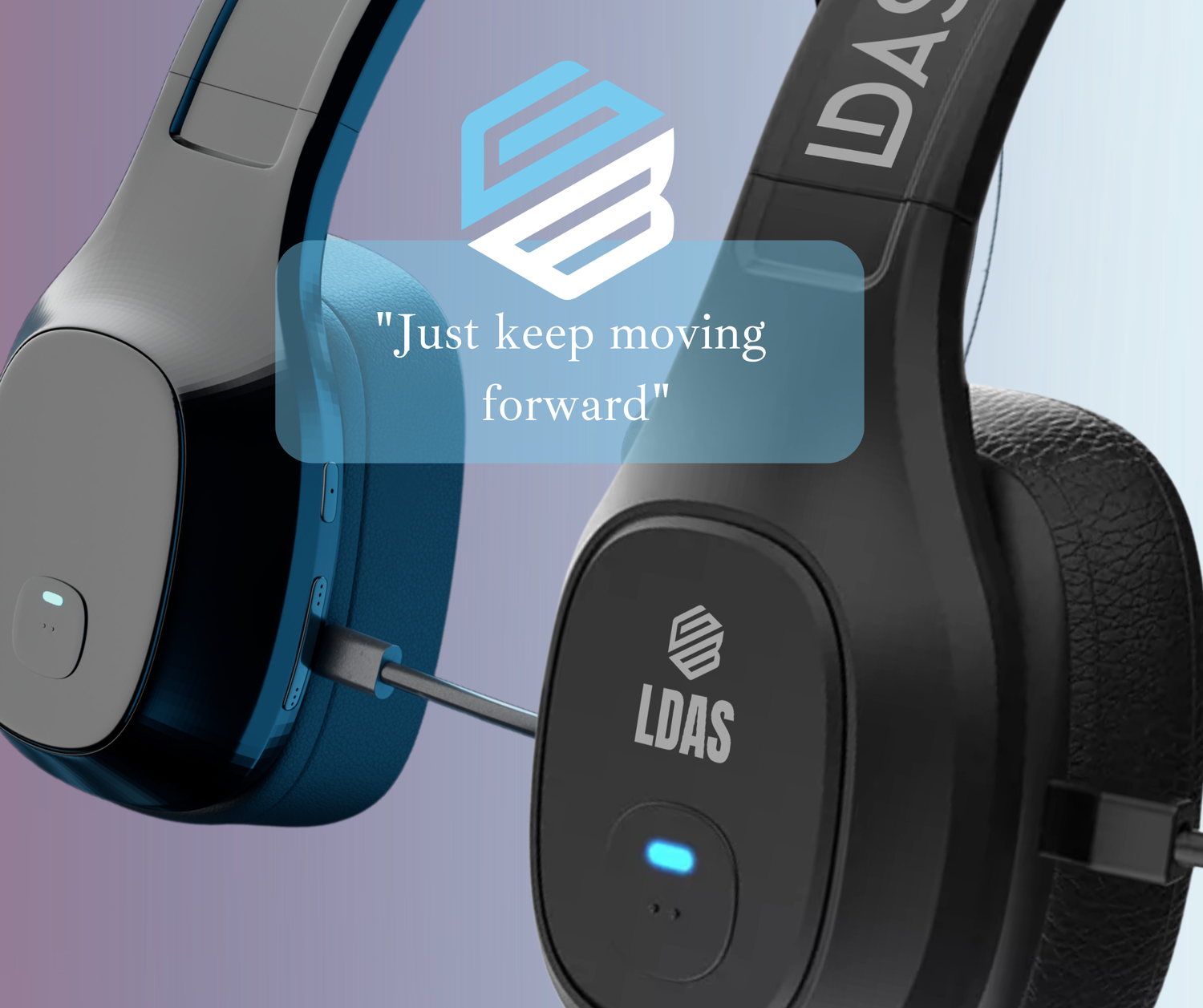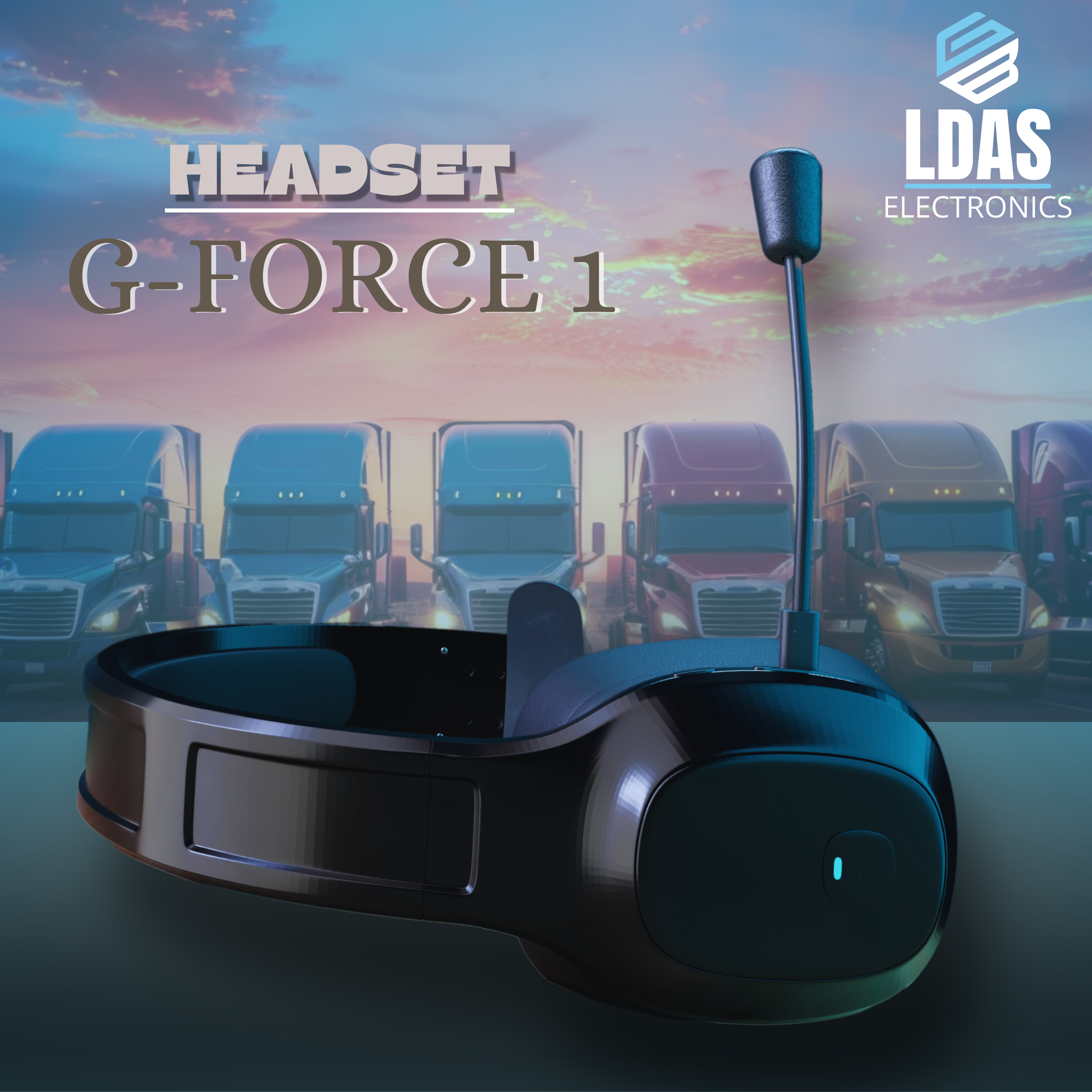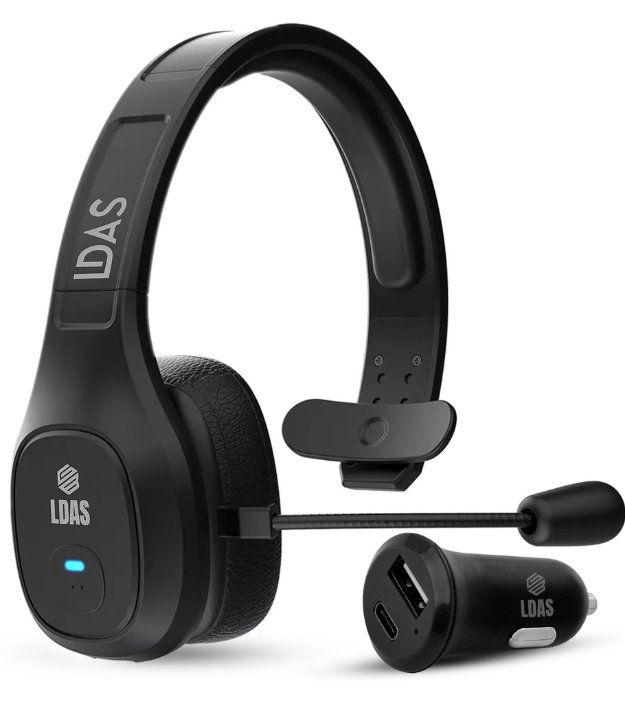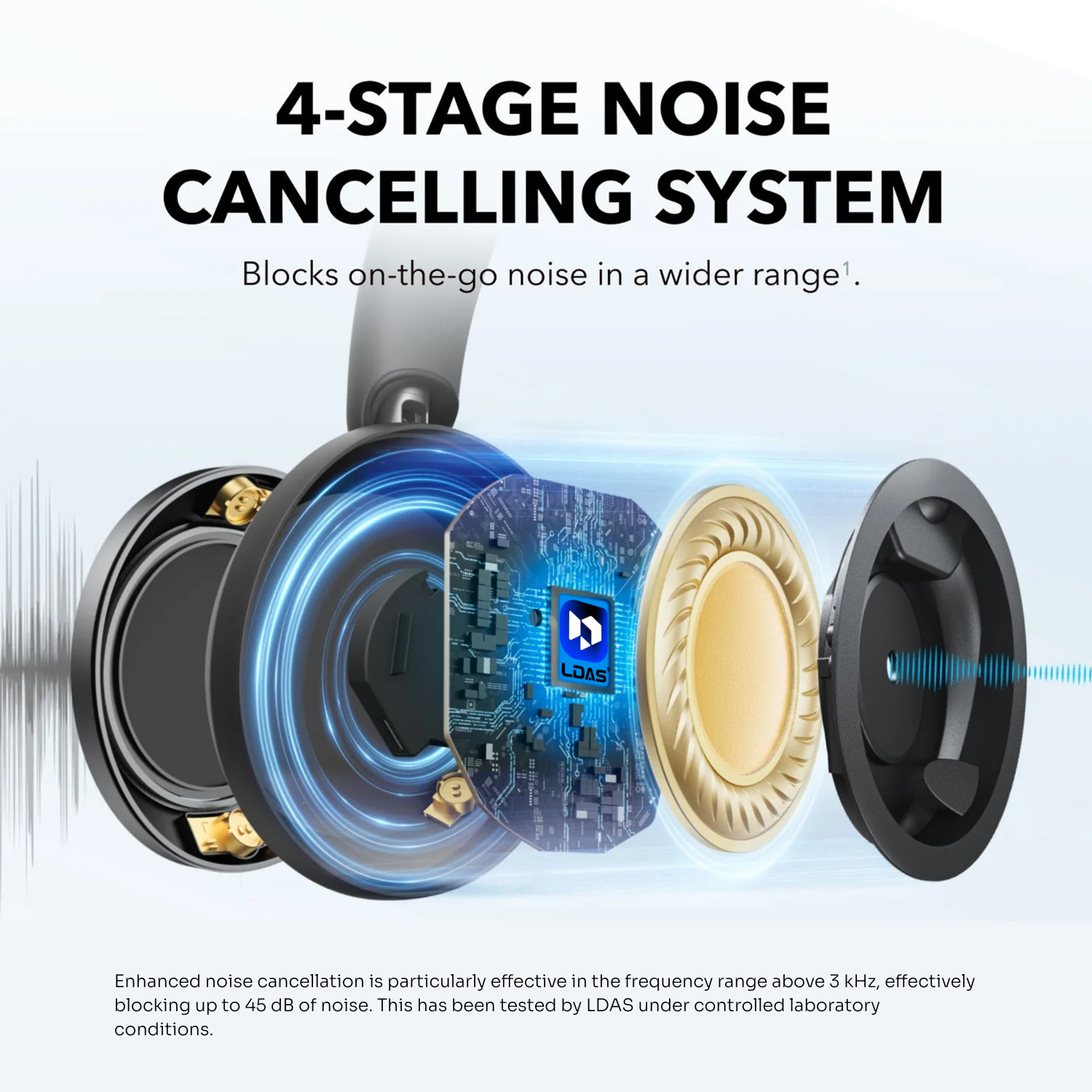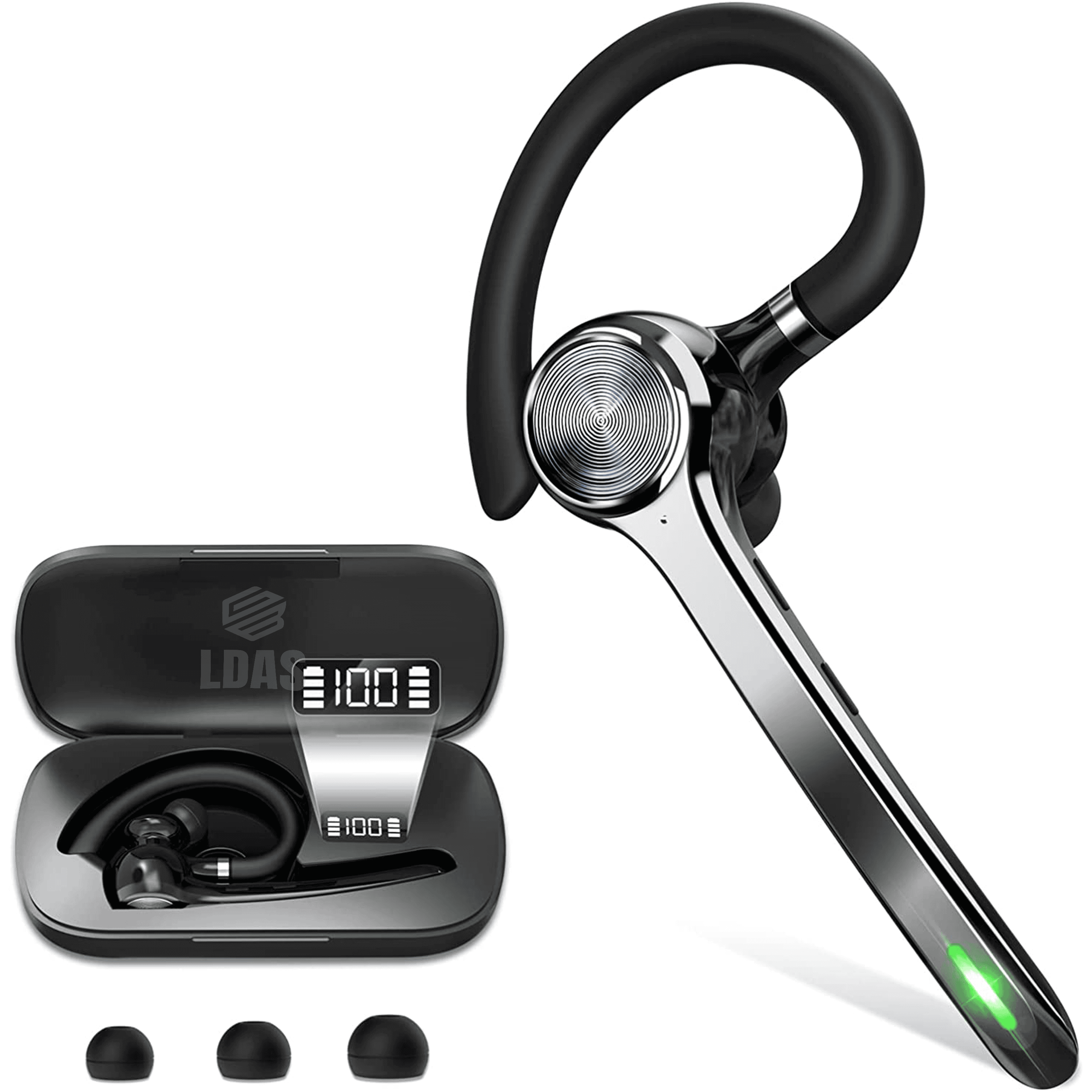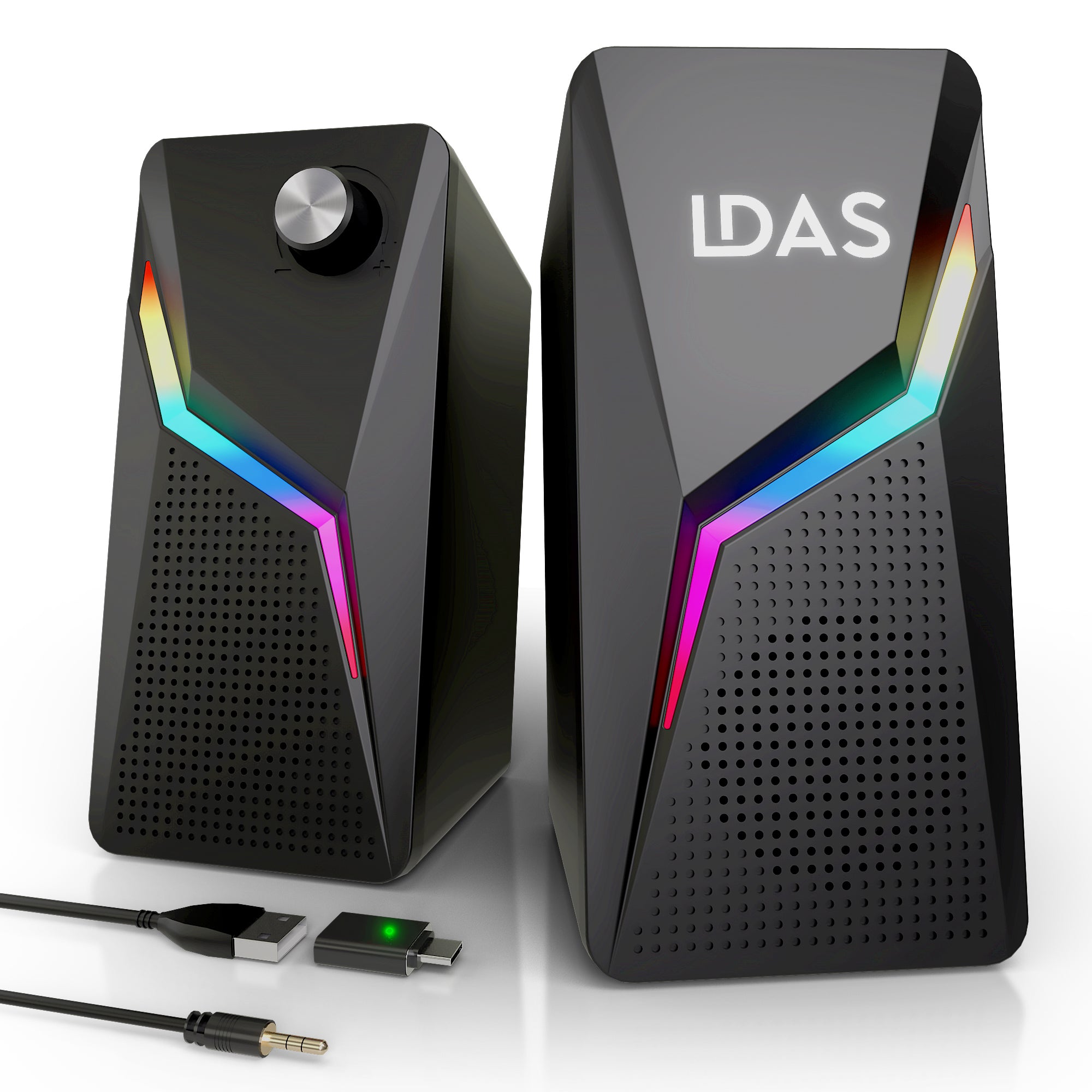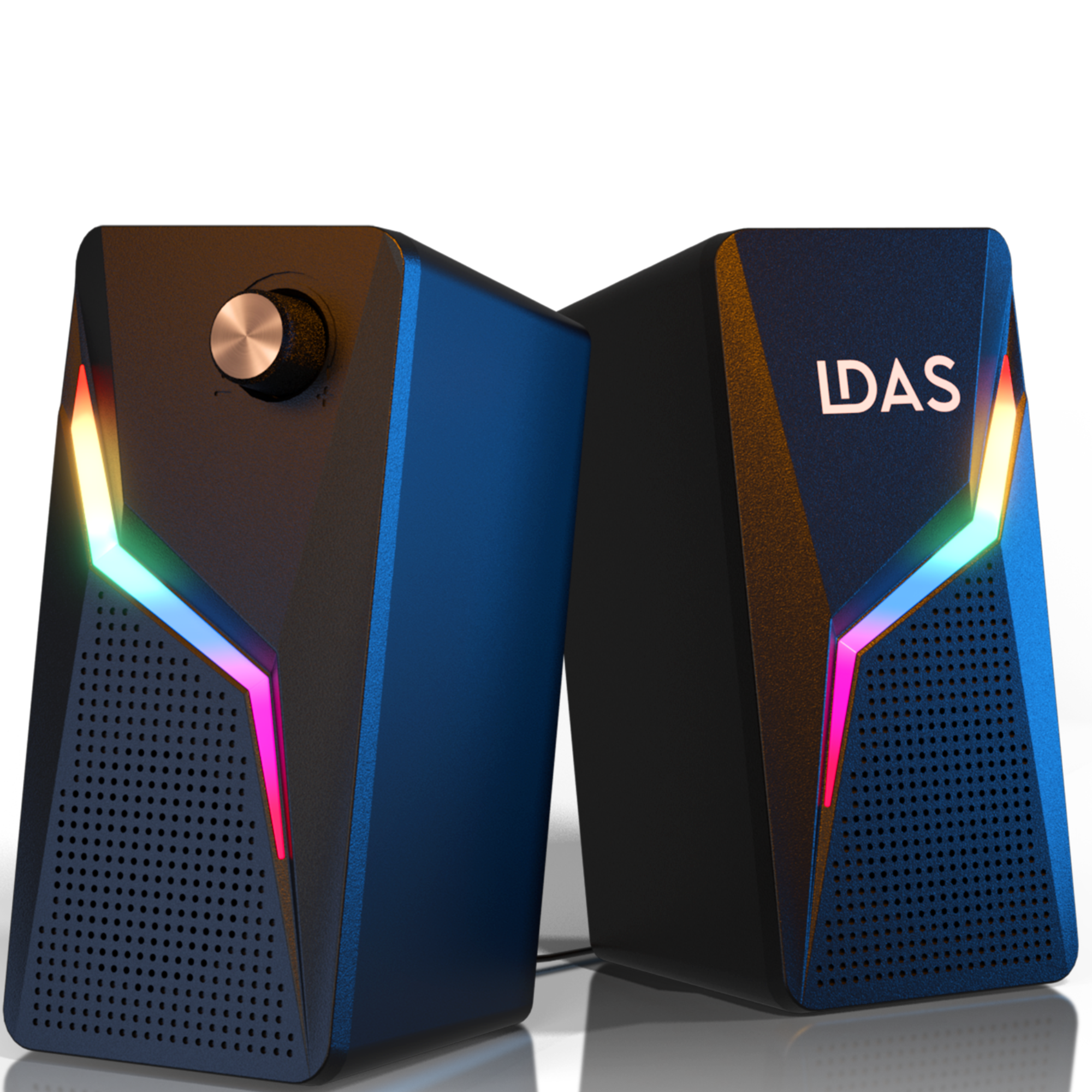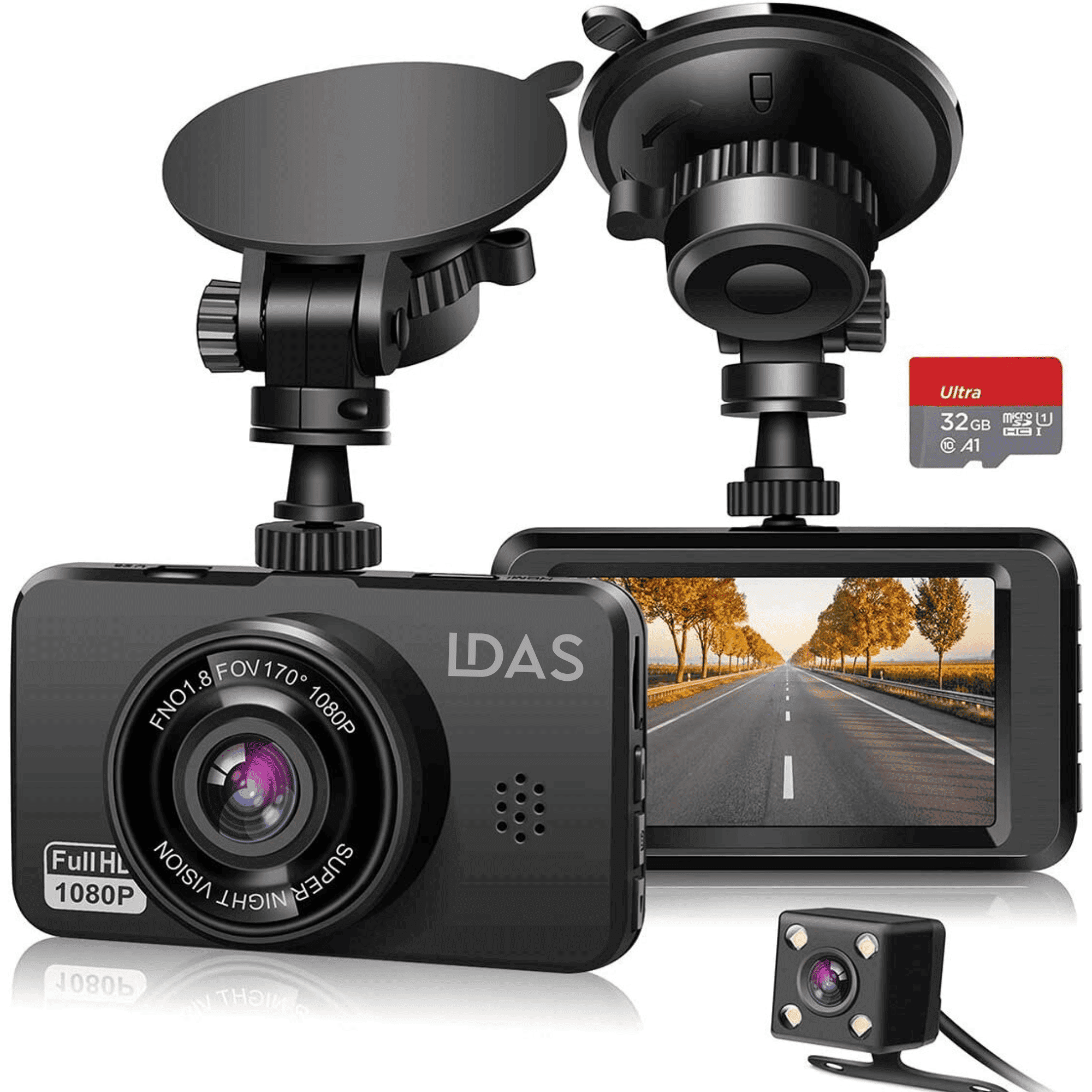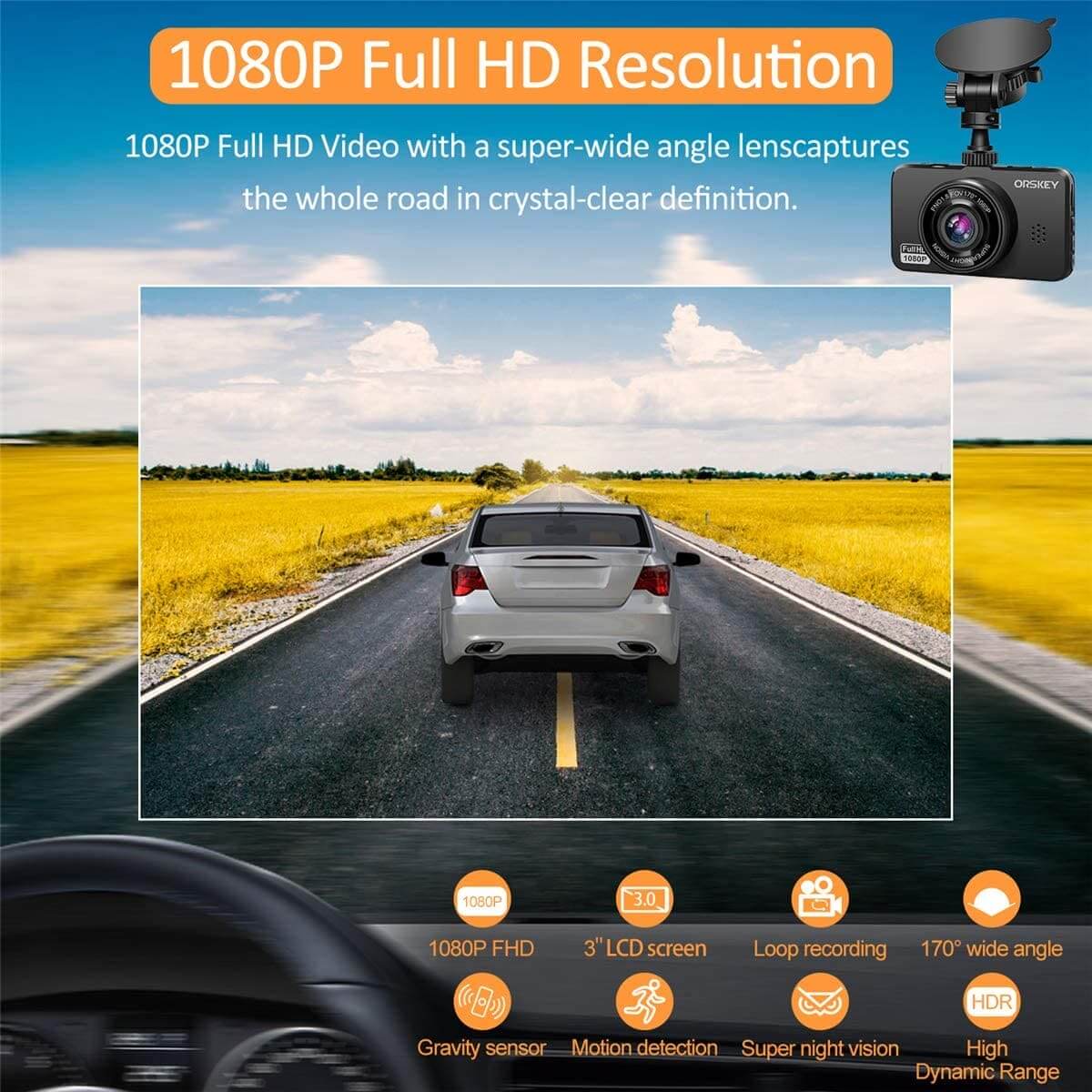Are you tired of dealing with tangled wires and limited movement while using headphones? It's time to enhance your audio experience with a wireless headset with a mic. This ultimate guide will take you through everything you need to know about these cutting-edge gadgets.
With technological advancements, wireless headsets have become increasingly popular. They offer the convenience of wire-free listening, allowing you to enjoy your favorite music or take calls without any hassle. But that's not all - a wireless headset with a mic takes the experience to a whole new level. You can effortlessly switch between listening to music and answering calls, all while keeping your hands free.
In this comprehensive guide, we will dive into the world of wireless headsets with a mic. We'll explore the benefits of going wireless, factors to consider when choosing the right headset for your needs, and provide you with expert recommendations. Say goodbye to tangled wires and hello to ultimate audio freedom - let's dive in!
Advantages of using wireless headsets with mic
Wireless headsets with microphones offer a range of advantages that make them a popular choice for various applications. One of the primary benefits is the freedom of movement they provide. With no cords to restrict your range, you can freely move around your workspace, engage in physical activities, or simply enjoy your music without being tethered to a device. This enhances productivity, allows for greater multitasking, and creates a more comfortable and immersive listening experience.
Another significant advantage of wireless headsets with mics is the improved audio quality. Advancements in Bluetooth technology and other wireless protocols have resulted in the ability to transmit high-quality audio with minimal latency. This means you can enjoy your music, movies, or gaming sessions with crystal-clear sound, without the interference or signal degradation that can sometimes occur with wired connections.
Wireless headsets also offer enhanced convenience and ease of use. The absence of cables eliminates the hassle of untangling wires, making it easier to put on and take off your headset. Additionally, many wireless headsets come with intuitive controls, such as volume adjustment and call answering buttons, right on the earpiece or headband, allowing you to manage your audio experience with just a few taps or clicks.
Types of wireless headsets with mic
Wireless headsets with microphones come in a variety of styles and form factors, each catering to different user preferences and needs. One of the most popular types is the over-ear wireless headset, which features large, cushioned ear cups that fully enclose the ears. These headsets often provide excellent noise isolation, immersive audio, and a comfortable fit for extended wear. They are well-suited for tasks that require focused attention, such as gaming, video conferencing, or professional audio production.
Another common type is the on-ear wireless headset, which rests on the outer ear rather than fully enclosing it. These headsets tend to be more compact and lightweight, making them a good choice for casual listening, commuting, or activities where a more discreet profile is preferred. On-ear wireless headsets often strike a balance between audio performance and portability.
In-ear wireless headsets, also known as wireless earbuds, are a compact and versatile option. These small, cordless earpieces fit snugly in the ear canal, providing a secure and comfortable fit. In-ear wireless headsets are popular for their portability, ease of use, and suitability for activities such as exercise, travel, or on-the-go communication. They often come with additional features like touch controls, noise cancellation, and wireless charging capabilities.
When selecting a wireless headset with a microphone, there are several key factors to consider to ensure you find the right solution for your needs. One of the primary factors is the wireless connectivity technology, such as Bluetooth or proprietary wireless protocols. Bluetooth is the most widely adopted and compatible standard, offering a good balance of audio quality, range, and battery life. However, some specialized applications may benefit from a proprietary wireless solution with lower latency or enhanced features.
Another important factor is the audio quality, which can be influenced by factors like the drivers, frequency response, and noise-canceling capabilities. If you're an audiophile or require high-fidelity sound for tasks like music production or gaming, you'll want to look for headsets with advanced audio features and a wide frequency range. For more casual use, a well-balanced audio profile may be sufficient.
The microphone quality is also a crucial consideration, especially for users who rely on clear communication for work, online meetings, or gaming. Look for headsets with noise-canceling microphones that can effectively isolate your voice from background sounds, ensuring your conversations are crisp and intelligible. Additionally, consider the microphone's placement, as a flexible boom mic or discreet built-in design may be preferable depending on your usage scenario.
In the ever-evolving world of wireless headsets with microphones, several models have emerged as standout options, catering to a wide range of user preferences and needs. One of the industry leaders is the Bose Noise Cancelling Headphones 700, which boast exceptional noise-canceling capabilities, superior audio quality, and a sleek, modern design. These over-ear headphones provide a immersive listening experience and seamless integration with digital assistants, making them a top choice for professionals, frequent travelers, and audiophiles.
Another highly acclaimed wireless headset with a mic is the Sony WH-1000XM4. These over-ear headphones offer industry-leading noise cancellation, delivering an unparalleled audio experience. The WH-1000XM4 also features intuitive touch controls, adaptive sound optimization, and a comfortable, ergonomic design - making them a versatile choice for a wide range of applications, from music enjoyment to productivity-enhancing virtual meetings.
For users seeking a more compact and portable solution, the Sennheiser Momentum True Wireless 2 earbuds are a standout option. These in-ear wireless headphones combine premium audio quality, active noise cancellation, and a sophisticated, minimalist design. With their intuitive touch controls, long-lasting battery life, and seamless Bluetooth connectivity, the Momentum True Wireless 2 earbuds offer a premium wireless audio experience in a convenient, on-the-go form factor.
How to set up and connect a wireless headset with mic
Setting up and connecting a wireless headset with a microphone is typically a straightforward process, but the exact steps may vary depending on the specific model and the devices you're using it with. Generally, the process involves the following steps:
- Charge the headset: Before using your wireless headset for the first time, ensure that the battery is fully charged. Most headsets come with a USB charging cable, which you can use to connect the headset to a power source, such as a wall adapter or a computer's USB port.
- Turn on the headset: Once the headset is charged, power it on by pressing the designated power button. This will activate the Bluetooth pairing mode, allowing you to connect the headset to your desired device.
- Pair the headset with your device: On your smartphone, tablet, or computer, navigate to the Bluetooth settings and select the option to scan for or add a new Bluetooth device. Your wireless headset should appear in the list of available devices. Select it, and follow the on-screen instructions to complete the pairing process.
- Adjust the settings: Depending on your needs and preferences, you may want to adjust the headset's settings, such as the volume, equalizer, or noise-canceling features. Many wireless headsets come with companion apps or software that allow you to customize the audio experience to your liking.
- Test the microphone: Make a test call or record a voice memo to ensure that the microphone is working correctly and your voice is being picked up clearly. Adjust the microphone positioning or settings as needed.
- Enjoy your wireless audio experience: With your headset successfully connected, you can now enjoy your music, podcasts, or make hands-free calls without the hassle of tangled wires.
Remember, the specific steps may vary slightly depending on the make and model of your wireless headset, as well as the device you're connecting it to. Refer to the manufacturer's instructions for detailed, model-specific guidance on the setup and connection process.
Troubleshooting common issues with wireless headsets with mic
While wireless headsets with microphones offer a convenient and enhanced audio experience, users may occasionally encounter some common issues. Understanding how to troubleshoot these problems can help you maintain the optimal performance of your wireless headset and ensure a seamless user experience.
One of the most common issues is connectivity problems, where the headset fails to connect or maintain a stable connection with the paired device. This can be caused by various factors, such as Bluetooth interference, low battery, or incompatible devices. To troubleshoot this, start by ensuring that your headset and device are within the recommended range (typically 30 feet or 10 meters) and that there are no physical obstructions or sources of interference, such as microwaves or cordless phones, between them. If the issue persists, try resetting the Bluetooth connection by unpairing and re-pairing the devices.
Another common problem is poor audio quality, which can manifest as static, crackling, or dropouts during playback. This can be due to a variety of reasons, including interference, codec compatibility, or issues with the headset's internal components. To address this, try moving your headset and paired device closer together, ensure that you're using the latest firmware version for your headset, and consider switching to a different audio codec or connection mode if available.
In some cases, users may encounter issues with the microphone, such as muffled or distorted audio during calls or voice recordings. This could be caused by factors like a faulty microphone, incorrect microphone settings, or environmental noise. Start by checking the microphone placement and ensuring that it's not obstructed. You can also try adjusting the microphone sensitivity or enabling noise-canceling features in the headset's settings or companion app. If the problem persists, consider contacting the manufacturer for further assistance.
Tips for maintaining and prolonging the lifespan of your wireless headset with mic
To ensure that your wireless headset with a microphone continues to provide a reliable and enjoyable audio experience for years to come, it's essential to properly maintain and care for it. Here are some tips to help you prolong the lifespan of your wireless headset:
- Charge the battery regularly: Always make sure to charge your wireless headset's battery fully before use. Avoid letting the battery drain completely, as this can potentially reduce its overall capacity over time. Consider keeping the headset connected to a power source when not in use to maintain a healthy charge level.
- Store the headset properly: When not in use, store your wireless headset in a cool, dry place, preferably in the original carrying case or a protective pouch. Avoid exposing the headset to extreme temperatures, moisture, or direct sunlight, as these can damage the internal components and affect the performance.
- Clean the headset regularly: Gently wipe down the headset's exterior with a soft, dry cloth to remove any dirt, sweat, or oil buildup. Pay special attention to the ear cups, microphone, and any exposed ports or connectors. Avoid using harsh chemicals or submerging the headset in water, as this can damage the sensitive electronic components.
- Update the firmware: Check the manufacturer's website periodically for any available firmware updates for your wireless headset. Installing these updates can help improve audio quality, connectivity, and resolve any known software-related issues, ensuring your headset continues to perform at its best.
- Protect the headset from physical damage: Be mindful of how you handle your wireless headset, especially when traveling or during physical activities. Avoid dropping the headset or subjecting it to sudden impacts, as this can lead to internal damage and compromised performance.
- Use the headset within the recommended range: Respect the Bluetooth or wireless range specified by the manufacturer, as exceeding this range can cause connection drops and signal interference, potentially shortening the lifespan of your headset.
By following these maintenance tips, you can help ensure that your wireless headset with a microphone continues to deliver reliable and high-quality audio performance for years to come, allowing you to fully enjoy your wireless audio experience.
When it comes to choosing between wireless headsets with a microphone and their wired counterparts, there are several key considerations to weigh. Both options offer unique advantages and cater to different user preferences and needs.
One of the primary advantages of wireless headsets with a mic is the freedom of movement they provide. Without the constraints of a physical cable, users can freely move around, engage in activities, and multitask without the hassle of tangled wires. This enhanced mobility can be particularly beneficial for tasks like video conferencing, gaming, or outdoor activities where a wired setup may be impractical or limiting.
In terms of audio quality, the gap between wireless and wired headsets has significantly narrowed in recent years, thanks to advancements in wireless technologies. Many high-end wireless headsets with mics now offer audio fidelity that rivals or even surpasses their wired counterparts, with features like low-latency codecs, noise cancellation, and immersive sound profiles. However, for the most discerning audiophiles or professional applications that demand the absolute highest audio quality, a wired connection may still be the preferred choice.
Another key consideration is the issue of battery life and reliability. Wireless headsets require regular charging, which can be an inconvenience for users who rely on their headsets for extended periods. Wired headsets, on the other hand, do not have this limitation, as they draw power directly from the connected device. However, modern wireless headsets often boast impressive battery life, with some models offering up to 30 hours of continuous use on a single charge.
When it comes to cost, wired headsets with mics tend to be more affordable, as they don't require the additional components and technologies necessary for wireless connectivity. Wireless headsets, while offering greater convenience, often come with a higher price tag, especially for premium models with advanced features like active noise cancellation or touch controls.
Ultimately, the choice between wireless and wired headsets with mics will depend on your specific needs, usage scenarios, and personal preferences. Wireless headsets excel in providing mobility and convenience, while wired models may offer slightly better audio quality and reliability in certain situations. Carefully weighing the pros and cons of each option will help you make the right decision for your audio requirements.
Conclusion: Making the right choice for your audio needs
In the ever-evolving world of audio technology, wireless headsets with microphones have emerged as a game-changer, offering a seamless and enhanced listening experience. By eliminating the constraints of tangled wires, these cutting-edge gadgets have revolutionized the way we interact with our audio devices, allowing for greater freedom, convenience, and productivity.
As we've explored in this comprehensive guide, wireless headsets with mics come in a variety of styles, from over-ear to in-ear designs, each catering to different user preferences and needs. Factors like wireless connectivity, audio quality, microphone performance, and battery life are all crucial considerations when choosing the right headset for your specific requirements.
Whether you're a music enthusiast, a remote worker, a passionate gamer, or simply someone who values the convenience of hands-free communication, a wireless headset with a microphone can truly enhance your audio experience. By taking the time to research and compare the top models in the market, you can find the perfect solution that seamlessly integrates with your lifestyle and empowers you to embrace the freedom of wireless audio.
So, bid farewell to the tangled web of wires and embrace the future of wireless audio. With the right wireless headset with a mic, you can unlock a world of unparalleled convenience, superior sound quality, and uninterrupted connectivity - all while elevating your overall audio experience to new heights. The choice is yours, and the possibilities are endless.

